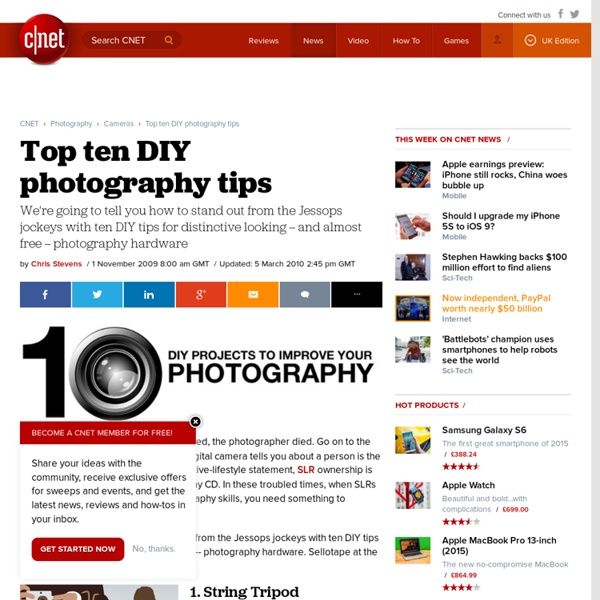Top ten DIY photography tips

How to Use Ultra-Wide Lenses
August 2008 Nikon Reviews Canon Reviews Leica Reviews Pentax Reviews Introduction Ultrawide lenses are the most difficult lenses to use well. Ultrawides are not for "getting it all in." Ultrawides rub the viewer's nose in your subject. Ultrawide lenses are for getting close and bringing the viewer into the photo, not for fitting a subject into a photo. Ultrawides are not for the faint of heart. Most people use ultrawides too sheepishly, and get crummy results with tiny subjects dwarfed in the middle of an open frame. Ultrawides require you to get very close and personal to anything you are shooting. If you use them properly, you'll be rewarded with dynamic images. My 17-35mm zoom always seems to be shot at 17mm, my 16-35mm always at 16mm, and my 14-24mm always seems to be at the 14mm stop. Your taste will vary, but this is how I see the world. How Wide is Wide All this becomes more important as your ultrawide gets wider. 28mm and 24mm lenses are still pretty normal as wide lenses go. Scale
Common Photography Lighting Mistakes and Fixes
Pin It This is the second in a 4-part series of Common Photography Mistakes tutorials that Jean Smith Photography put together for I Heart Faces. Be sure to read the other three parts of her series here: It’s all about LIGHTING this week! Natural Light Mistake #1 – Looking for location first. The Fix – Always look for light first, THEN worry about location. Natural Light Mistake #2 – Subject has dark or “dead” eyes. The Fix – The eyes are typically the most important part of an image (unless you have a specific or artistic reason for wanting them dark) and they should be filled with light. Natural Light Mistake #3 – Shooting your subject in dappled sun. The Fix – What the heck is dappled light? Natural Light Mistake #4 – Avoiding midday sun. The Fix – We can all admit it. Natural Light Mistake #5 – Facing your subject toward midday sun. The Fix - I know, I know, I JUST told you to get out of your comfort zone and place your subject out in the sun.
Related:
Related:



